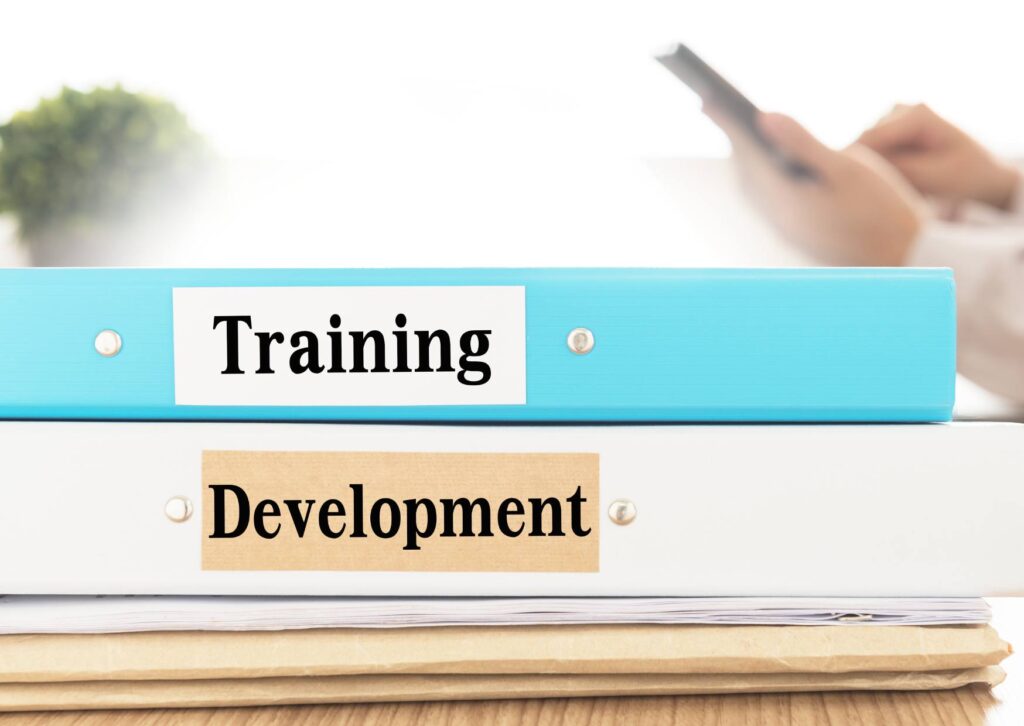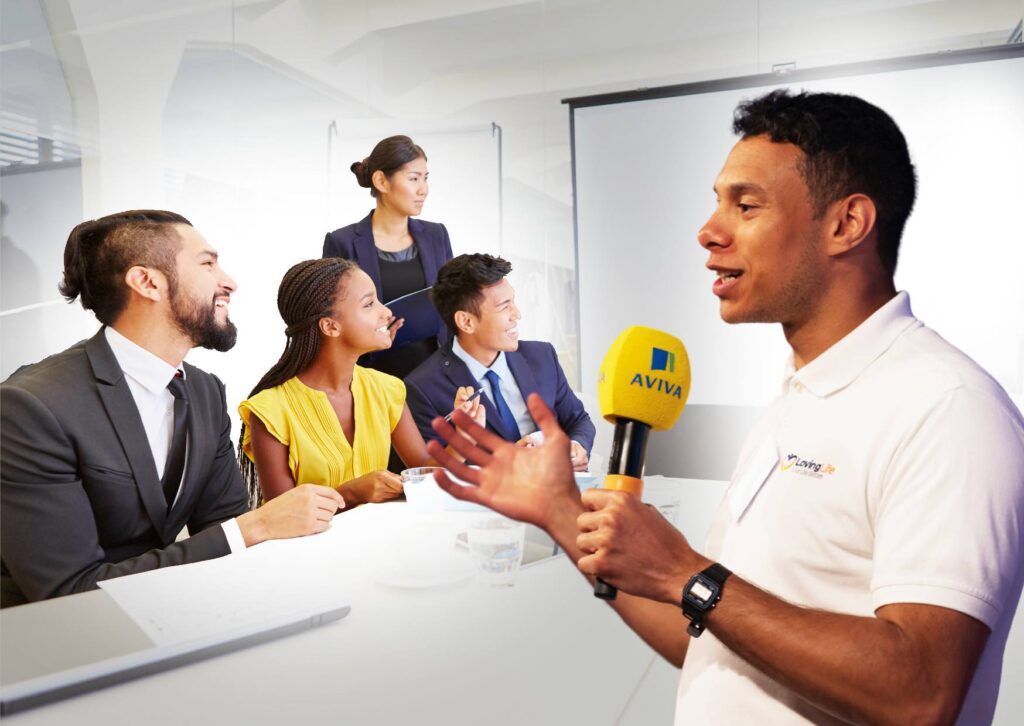25 Unique Ways of Motivating Staff
Employee motivation is a critical component of any successful business.
As the modern workplace continues to evolve, keeping your team engaged and motivated can be challenging.
However, it’s essential for the growth and stability of many organisations.
When employees are motivated, they not only bring their best selves to work but also contribute positively to the company culture, driving innovation and productivity.
This blog explores 25 unique strategies to inspire and energise staff.
We delve into the benefits of a motivated workforce and how this leads to enhanced employee engagement.
Whether you’re a startup, a small business, or a large corporation, these insights will provide you with fresh perspectives and practical approaches to employee motivation.
Contents
25 Unique Ways of Motivating Staff
- 1. Motivating and Inspiring Employee Workshops
- 2. Providing On-Site Massage
- 3. Flexible Working Hours
- 4. Recognition and Reward Programs
- 5. Career Development Opportunities
- 6. Team Building Activities
- 7. Health and Wellness Programs
- 8. Open Communication Channels
- 9. Personalised Incentives
- 10. Community Engagement Opportunities
- 11. Creative Workspaces
- 12. Continuous Feedback Mechanisms
- 13. Leadership Development Programs
- 14. Work-Life Balance Initiatives
- 15. Innovation Challenges
- 16. Skill-Based Training Sessions
- 17. Social Events and Gatherings
- 18. Team Motivation Projects
- 19. Tailored Personal Development Plans
- 20. Integrating Intrinsic and Extrinsic Motivation Techniques
- 21. Regular Employee Engagement Surveys
- 22. Employee Goal Setting
- 23. Mentorship and Peer Support Programs
- 24. Departmental Skill-Sharing Sessions
- 25. Role Rotation Programs
The Benefits of Motivated Employees
Why Motivating Staff Helps with Employee Engagement
25 Unique Ways of Motivating Staff
Employee motivation is beneficial to both employer and employee.
It’s the invisible force that drives productivity, fosters a positive work environment, and propels a business towards its goals.
These 25 methods offer innovative and practical ways to keep employees motivated toward a company’s mission.
1. Motivating and Inspiring Employee Workshops
Creating an environment where employees feel constantly inspired and engaged can be achieved through motivating and inspiring employee workshops.
These workshops are tailored to motivate employees, ignite passion, creativity, and a sense of purpose among team members.
They can range from sessions on personal growth and increasing motivation to harnessing gratitude and creating life-changing habits.
The key is to make these workshops interactive and relevant, encouraging employees to share their experiences and ideas.
This not only fosters a learning culture but also helps in identifying hidden talents and interests within your team.
Regularly scheduled workshops keep the momentum going.
This ensures that motivation is not just a one-off event but a continuous process embedded in the workplace culture.
As a company that delivers corporate workshops, we’ve witnessed first-hand the power of these workshops when it comes to motivating employees.
Teaching motivation strategies and watching employees implement it is extremely rewarding.
2. Providing On-Site Massage
Incorporating wellness into the workplace is a powerful motivator, and providing on-site massage is an excellent way to do this.
This unique approach not only offers employees a chance to relax and de-stress but also demonstrates a company’s commitment to their wellbeing.
On-site massages can be scheduled as regular events, perhaps as part of a wellness Wednesday program.
A professional massage therapist will come to the office and offer short, rejuvenating sessions.
This small luxury can significantly boost morale, reduce workplace stress, and even improve motivation.
It’s a tangible way to make a companies workforce feel valued and fosters a sense of appreciation and loyalty.

3. Flexible Working Hours
Flexible working hours are an increasingly popular and effective way to motivate staff.
By allowing employees the freedom to choose their work hours or work from home on certain days, companies demonstrate trust and respect for their staff’s personal lives and time management skills.
This flexibility can lead to increased job satisfaction, as employees feel empowered to balance their work and personal commitments more effectively.
Whether it’s adjusting start and end times, allowing for compressed workweeks, or offering working from home options, these adjustments can significantly boost employee morale and productivity.
Such policies acknowledge that each employee has unique needs and circumstances.
This promotes a more inclusive and accommodating work environment, keeping employees motivated.

4. Recognition and Reward Programs
Employee recognition is a powerful way to motivate employees.
These programs should be designed to acknowledge both individual and team achievements in meaningful ways.
This could range from simple ‘Employee of the Month’ awards to more elaborate reward systems like bonus points that can be accumulated and exchanged for gifts or experiences.
The key is to ensure that these recognitions are aligned with company goals and core values.
This makes them not only a reward, but also a reinforcement of what the company stands for.
Regularly celebrating milestones, big wins, and even small day-to-day achievements can act as a great motivator, boosting morale, encouraging healthy competition, and making employees feel valued and appreciated for their contributions.
5. Career Development Opportunities
Offering career development opportunities is a crucial strategy for motivating staff.
This involves providing avenues for professional growth such as training programs, mentorship schemes, and pathways for advancement within the company.
By investing in employees’ professional development, a company shows that it values and believes in its team’s potential.
This not only motivates staff to improve their skills and knowledge but also fosters loyalty and a long-term commitment to the company.
Encouraging staff to attend conferences, enroll in workshops, or take courses relevant to their roles and career goals can empower them to take charge of their career paths.
This leads to more engaged employees and higher job satisfaction.
Both great factors towards employee motivation.

6. Team Building Activities
Team building activities are a fantastic way to foster employee motivation.
These activities, ranging from outdoor adventures to problem-solving challenges, encourage teamwork, communication, and trust among colleagues.
By stepping out of the regular work setting, employees get a chance to see each other in a different light, which can lead to a stronger emotional connection with colleagues.
Regularly scheduled team outings, whether they are fun social gatherings or more structured team development exercises, help break the monotony of the daily routine.
These activities show employees that the company values their happiness and connection to one another.
This investment in team dynamics often translates to improved collaboration and a more harmonious workplace.

7. Health and Wellness Programs
Implementing health and wellness programs is an effective method for employee motivation.
These programs can include activities like yoga classes, meditation sessions, or even health-related workshops.
They aim to not only improve physical wellbeing but also mental and emotional health.
By prioritising the overall wellness of employees, companies can reduce stress, increase productivity, and enhance motivation.
These wellness initiatives can range from providing healthier snack options in the office, to sponsoring participation in local fitness challenges or wellness retreats.
They can act as a great way of motivating employees to live happier and healthier lives.
When the workforce feel that their health is valued, they are more likely to be engaged, energetic, and committed to their work and the company.
8. Open Communication Channels
Establishing open communication channels is a vital strategy for employee motivation.
This involves creating an environment where employees feel comfortable sharing their ideas, concerns, and feedback.
Companies can achieve this by employee feedback meetings, suggestion boxes, or open-door policies with management.
The goal is to ensure that employees feel heard and that their opinions matter.
When staff members know that their voices can influence change and improvements within the organisation, it instils a sense of ownership and engagement in their roles.
This approach not only fosters transparency and trust but also encourages a more collaborative and innovative company culture.
9. Personalised Incentives
Personalised incentives are a unique way to motivate employees.
By catering to their individual preferences and interests, employees feel motivated.
Instead of a one-size-fits-all reward system, personalised incentives take into account what each employee values most.
This could range from extra days off for those who value time with family, to tickets to a concert for music lovers.
Find the motivational factors that align with each individual.
By tailoring rewards to individual employees, a company demonstrates a deep understanding and appreciation for its staff, leading to increased job satisfaction and loyalty.
Personalised incentives show employees that their unique preferences and needs are recognised and valued, which can significantly boost morale and motivation.
10. Community Engagement Opportunities
Providing community engagement opportunities is an excellent way to motivate employees and foster a sense of purpose and fulfilment.
This could involve organising volunteer days, supporting local charities, or participating in community projects.
Such initiatives allow employees to contribute positively to society, which can be incredibly rewarding and motivating.
It also helps in building a strong team spirit as employees work together for a common cause outside of their usual work responsibilities.
Companies that encourage community engagement demonstrate a commitment to social responsibility, which can resonate deeply with employees, especially those who value altruism and community involvement.
This approach not only benefits the wider community but also enhances the company’s image and creates a more engaged and compassionate workforce.
This can boost moral and improve employee motivation.

11. Creative Workspaces
Designing creative workspaces is an innovative way to stimulate and motivate employees.
The physical environment in which people work can have a significant impact on their creativity, motivation, and overall job satisfaction.
This can involve anything from vibrant and inspiring office decor to flexible seating arrangements.
Companies can also create comfortable lounges or buy standing desks.
Additionally, creating spaces for relaxation, like a quiet room for meditation or a lively game room, can also be beneficial.
These changes can break the monotony of a traditional office setup.
This helps to motivate employees by fostering a more dynamic and enjoyable work atmosphere.
When employees work in an environment that is both aesthetically pleasing and functionally supportive, it can lead to increased motivation, better collaboration, and a stronger attachment to the company.
Ultimately enhancing business success.
12. Continuous Feedback Mechanisms
Implementing continuous employee feedback mechanisms is a key strategy in keeping staff motivated.
Rather than relying solely on annual reviews, continuous feedback involves regular, constructive discussions about employee performance, goals, and career development.
This approach keeps employees informed about how they’re doing and what they can improve on a more frequent basis, which can be more effective than yearly evaluations.
Methods like regular one-on-one meetings, performance tracking apps, or even informal check-ins can be used for this purpose.
Continuous feedback ensures that employees feel supported and guided in their professional journey.
This helps them to stay focused, engaged and can act as a great motivator.
It also allows for quicker adjustments and fosters a culture of continuous improvement and open communication.

13. Leadership Development Programs
Investing in leadership development programs is a significant way to motivate employees, especially those in senior management.
These programs can be structured to offer training in leadership skills, management techniques, and strategic thinking.
They help in preparing employees for future leadership positions within the company and demonstrate a clear pathway for career advancement.
By offering these opportunities, companies not only equip their staff with valuable skills but also show confidence in their potential to grow and lead.
This can be incredibly motivating, as it provides employees with a sense of progression and the possibility of taking on more significant roles in the future.
Leadership development also benefits the company by creating a pipeline of skilled and motivated leaders.
14. Work-Life Balance Initiatives
Promoting work-life balance through various initiatives is essential to employee motivation and reducing burnout.
This can include policies like flexible working hours, the option to work remotely, or even implementing a four-day work week.
Encouraging employees to take regular breaks, disconnect after work hours, and fully utilise their annual leave are also key aspects of this approach.
Work-life balance initiatives show employees that the company respects and values their time both inside and outside of work.
This respect can lead to increased job satisfaction, improved employee engagement, loyalty, and motivation.
When employees are more balanced, they experience less stress, and are more capable of focusing fully on their work tasks.
It’s about creating a supportive environment where employees can remain engaged and thrive both professionally and personally.

15. Innovation Challenges
Innovation challenges are a great way to motivate staff by tapping into their creative problem-solving abilities.
These challenges can be organised as competitions where employees or teams are encouraged to come up with new ideas to business-related problems or to develop new product ideas.
Providing incentives for the best ideas not only motivates participation but also fosters a culture of innovation within the organisation.
This approach can encourage creativity and allow employees to think outside the box while feeling a sense of ownership and pride towards the company’s success.
Innovation challenges can also be a fun and engaging way to break the routine, stimulate collaboration across different departments, and uncover hidden talents among the workforce.
Check out our blog on “10 Corporate Fitness Challenges“
16. Skill-Based Training Sessions
Offering skill-based training sessions is one of the strategic ways to motivate employees.
By enhancing employees professional competencies, employers can enhance their employees career path while providing them with skills that can benefit the company.
These sessions can be tailored to the specific needs of the workforce, focusing on areas such as technical skills, soft skills, or industry-specific knowledge.
By providing access to these learning opportunities, companies not only aid in the personal development of their employees but also improve the overall skill set of their team.
This investment in employee growth demonstrates a commitment to their long-term success and can significantly increase job satisfaction and confidence.
Employees who are growing and developing professionally can contribute ideas toward business success.
They are also more likely to be engaged, motivated, and committed to their roles, overall enhancing their employee experience.

17. Social Events and Gatherings
Organising social events and gatherings is a key strategy for building more connected and motivated employees.
These events can range from casual after-work gatherings to more formal company parties or team-building retreats.
They provide opportunities for employees to interact in a relaxed, non-work setting.
Social events help in breaking down barriers between different levels of staff, fostering a sense of community and belonging within the company.
They can be important for boosting morale, increasing employee engagement, encouraging informal networking, and allowing employees to connect with their colleagues.
Such events show that the company values and invests in the social well-being of its team members.
This can lead to a more cohesive, friendly, motivated and collaborative workplace culture.
18. Team Motivation Projects
Implementing team motivation projects is an effective way to foster a culture of motivated employees.
These projects involve creating team-specific goals or challenges that are designed to align with the team’s unique dynamics and objectives.
The idea is to encourage collaboration, creativity, and a sense of shared purpose within the team.
These projects can range from collaborative charity initiatives to team-based competitions or creative problem-solving tasks.
The key to these team motivation ideas is to tailor them to the interests, strengths, and needs of each team.
This helps to ensure that they are both engaging and relevant.
This approach not only boosts the overall morale of the team but also promotes a deeper sense of unity and commitment to the company’s goals.
By focusing on what drives each team, companies can cultivate an environment where motivated employees thrive and contribute to the success of the business

19. Tailored Personal Development Plans
Implementing tailored personal development plans is an essential employee motivation technique.
By creating individualised growth plans for each staff member, companies can effectively cater to the unique professional aspirations and skills development needs of their employees.
This personalised approach is a powerful way of motivating employees, as it demonstrates a company’s investment in their individual success and satisfaction.
Regular reviews and updates of these plans ensure that they remain relevant and aligned with both the employee’s and the organisation’s evolving goals.
Such employee motivation techniques not only foster professional growth but also significantly boost employee motivation and engagement.
Employees with clear, bespoke development plans are more likely to be motivated, committed, and proactive in contributing to the company’s success.
20. Integrating Intrinsic and Extrinsic Motivation Techniques
When it comes to employee motivation it’s essential to integrate intrinsic and extrinsic motivation techniques effectively.
Intrinsic motivation, which stems from internal satisfaction and personal fulfilment, can be fostered by aligning job roles with the employees’ interests, encouraging creativity, and ensuring the work is meaningful.
On the other hand, extrinsic motivation, driven by external rewards like bonuses, promotions, or recognition, also plays a crucial role in employee engagement.
An optimal employee motivation strategy blends these two approaches.
This creates a work environment that not only rewards achievement, but also resonates with the personal aspirations and values of the staff.
This balanced approach is key to sustaining a highly motivated and engaged workforce, where employees are both internally driven and externally appreciated for their contributions.
21. Regular Employee Engagement Surveys
Implementing regular employee engagement surveys is an effective strategy for boosting employee retention and motivation.
These surveys are designed to gauge the level of employee motivation and satisfaction within the organisation.
By frequently asking for feedback on various aspects of their work life, companies can identify areas that need improvement and understand better what keeps their employees motivated.
This process demonstrates to the staff that their opinions are valued and considered in decision-making.
This can significantly enhance motivated employees’ sense of belonging and loyalty.
The insights gained from these surveys can then be used to implement targeted strategies that improve employee engagement, morale, and ultimately, retention.
Regular engagement surveys are a tangible way for companies to show they are committed to creating a supportive and motivating work environment, leading to a more satisfied and stable workforce.

22. Employee Goal Setting
Employee goal setting is a powerful method to cultivate motivated employees.
This approach focuses on establishing individual objectives that resonate with the overarching goals of the organisation.
By integrating employee motivation and the company mission, staff members gain a clearer understanding of how their personal achievements contribute to the broader success of the business.
This alignment not only enhances employee morale but also ensures that everyone is working towards a common purpose.
The process of setting these goals should be interactive and reflective, allowing employees to see their role in the company’s narrative.
This technique not only motivates employees by giving them a sense of ownership and purpose but also fortifies their connection with the company’s mission, leading to a more engaged and cohesive workforce.
To help employees get started, companies could provide a goal setting workshop.

23. Mentorship and Peer Support Programs
One of the effective ways to motivate employees is through the implementation of mentorship and peer support programs.
These programs serve as key motivation strategies, offering employees guidance, support, and valuable insights from more experienced colleagues.
By pairing less experienced staff with mentors, companies can create a nurturing environment where knowledge and skills are freely shared.
This not only aids in employee motivation but also helps to boost employee morale.
It also helps to foster a sense of belonging and community within the workplace.
Additionally, peer support groups can be formed to discuss challenges, celebrate successes, and share advice.
These groups provide a platform for collaborative problem-solving and learning, further enhancing the professional development and engagement of all participants.
Initiatives like these demonstrate a company’s commitment to the growth and wellbeing of its employees, making them feel valued and supported in their career journey.

24. Departmental Skill-Sharing Sessions
Organising departmental skill-sharing sessions is an effective way to engage many employees and foster a sense of community within an organisation.
These sessions allow employees from different departments to come together and share their unique skills and knowledge.
This can range from technical skills specific to a department to more general soft skills like communication or time management.
By encouraging a culture of learning and knowledge exchange, companies can cultivate a competitive spirit in a positive and collaborative way.
Providing positive feedback during and after these sessions is essential, as it recognises the contributions of each participant and motivates them to continue sharing and learning.
This approach not only benefits the individual employees by expanding their skill sets but also enhances the overall efficiency and synergy of the diverse workforce.
25. Role Rotation Programs
Implementing role rotation programs can be a key motivating factor for employees seeking new experiences and challenges within the organisation.
This technique allows team members to temporarily switch roles or work in different departments, providing a fresh perspective on the company’s operations.
Such experiences are invaluable as ways to motivate and broaden the skill sets of other employees.
By stepping into different roles, individuals gain a deeper understanding of various aspects of the business, which can be both enlightening and energising.
This approach helps team members feel motivated as they acquire new skills and insights, fostering a more adaptable and versatile workforce.
Effective employee motivation techniques like this help to break the monotony of routine work and encourages continuous learning and growth.
This strategy not only benefits the individual employees but also enhances the overall flexibility and innovation capacity of the team.

The Benefits of Motivated Employees
When team members exhibit high levels of motivation, there are many benefits to an organisation.
Motivated employees play a pivotal role in driving business productivity and improving overall business outcomes.
Here’s a deeper look into some of the key benefits of creating a motivated workforce:
Enhanced Employee Retention
One of the most significant advantages of having motivated employees is increased employee retention.
When you effectively motivate your employees, they are more likely to stay committed to your company.
Motivated staff members find their work fulfilling and are less inclined to seek opportunities elsewhere.
This stability is crucial for maintaining a knowledgeable and experienced workforce.
Increased Productivity
Unlike an a unmotivated employee, motivated employees often go the extra mile.
Their dedication and enthusiasm typically translate into higher business productivity.
These individuals are more engaged, work efficiently, and are generally more productive, which can significantly impact the company’s bottom line.

Improved Quality of Work
Intrinsic motivation leads to employees taking greater pride in their work.
This often results in higher-quality outputs, as team members are more focused and invested in delivering their best.
High-quality work is essential for maintaining competitive advantage and customer satisfaction.
Enhanced Team Collaboration
When you motivate teams effectively, it fosters a positive and collaborative work environment.
Employees who are motivated are more likely to work well together, share new ideas, and support each other’s growth.
This collaborative spirit can lead to more innovative solutions and a more dynamic workplace.

Greater Flexibility and Adaptability
When employees are motivated, they are generally more open to change and new ideas.
Their willingness to learn and adapt is a significant asset in the rapidly changing business landscape.
This flexibility can be pivotal during times of transformation or when navigating market shifts.
Boost in Employee Morale
High morale is a natural byproduct of a motivated workforce.
When team members are motivated, there’s an overall positive atmosphere in the workplace.
This can be infectious and elevate the mood of the entire organisation.
Fostering Leadership Qualities
When employees are motivated they often exhibit leadership qualities and take initiative.
They are more likely to take on new challenges, lead projects, and inspire their colleagues.
This not only aids in their personal development but also cultivates a pool of potential future leaders for the organisation.
Positive Impact on Overall Business Outcomes
Ultimately, the culmination of these benefits leads to improved overall business outcomes.
From financial performance to customer satisfaction and brand reputation, motivating employees can positively influence various aspects of the business.
Overall, the importance of employee motivation extends beyond mere productivity.
It is about creating an environment where team members are engaged, committed, and willing to contribute their best.
This holistic approach to motivating employees not only enhances individual careers but also propels the entire organisation towards greater success and achievement.

Why Motivating Staff Helps with Employee Engagement
Motivating staff is a crucial component in enhancing the employee experience and fostering a high level of employee engagement.
This process doesn’t happen overnight.
However, through consistent and thoughtful efforts, companies can create an environment where staff feel appreciated and motivated.
Here’s how motivating staff contributes to employee engagement:
Alignment with Company Objectives
When employees understand and relate to the company objectives, they are more likely to feel a part of the organisation’s journey.
Motivating staff helps them see how their work contributes to the larger goals, making them more engaged and invested in the outcomes.
Recognition and Appreciation
Employees who feel appreciated are more likely to be engaged.
Simple gestures like a team lunch or public acknowledgment can significantly increase motivation.
When employees see that their efforts are noticed and valued, they are more likely to put in discretionary effort.

Creating a Positive Work Environment
An environment where team members are encouraged and supported is fundamental for engagement.
In such a setting, employees are less likely to lose motivation and more likely to contribute positively.
Regular communication, team-building activities, and an inclusive culture are ways to motivate employees, creating a more engaging and productive workspace.
Providing Growth Opportunities
Engagement is often tied to how employees perceive their career path within the company.
Offering opportunities for learning and advancement can make staff feel more valued and motivated.
This could involve training programs, mentorship, and clear progression plans.
Enhancing the Employee Experience
Every interaction an employee has with the company contributes to their overall experience.
From the onboarding process to day-to-day tasks, ensuring that each team member has a positive experience is crucial.
This includes providing the right tools, a comfortable working environment, and a supportive culture.

Encouraging Autonomy and Responsibility
When employees are given autonomy in their roles, they often feel more motivated and engaged.
Trusting them to make decisions and take ownership of their tasks shows confidence in their abilities, which can boost their commitment and satisfaction.
Preventing Burnout
Continuously motivating employees and recognising their efforts helps prevent burnout.
When staff feel overwhelmed or underappreciated, they may lose motivation.
Addressing these issues proactively by offering support, acknowledging their workload, and providing necessary breaks can keep engagement levels high.
Building Stronger Connections
Encouraging collaboration and social interactions among employees can lead to stronger relationships and increase motivation and engagement.
Whether it’s through team outings, group projects, or social events, these interactions can help staff feel more connected to their colleagues and the company.
In conclusion, motivating staff is a multifaceted approach that goes beyond mere job satisfaction.
It’s about creating an environment where every team member feels an integral part of the organisation, has a clear understanding of their career path, and sees value in their contributions.
This comprehensive approach to employee motivation is essential for creating a high level of employee engagement, which ultimately drives the success and sustainability of the business.
The journey to create a workplace where employees consistently feel motivated and appreciated is both challenging and rewarding.
By implementing diverse strategies to boost morale, foster personal and professional growth, and recognise achievements, organisations not only encourage innovation but also build a culture where the workforce feel genuinely valued.

Remember, when employees feel appreciated, they are more likely to go above and beyond, contributing positively to the company’s success.
The key is to maintain an environment that balances support and challenge, allowing for continuous growth and innovation.
This investment in employee motivation is not just about enhancing productivity.
It’s about creating a thriving, dynamic, and engaged workforce that drives the organisation towards its goals with passion and commitment.
Author
Tyler Lowe – Health & Wellbeing Speaker
BSc Sport & Exercise Rehabilitation


